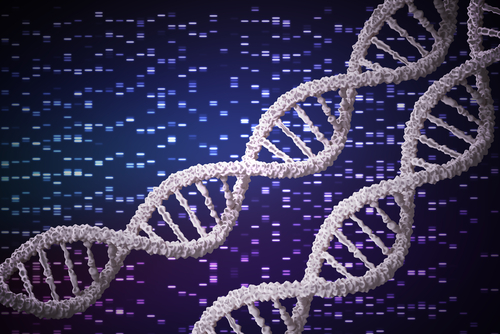Analysis Pinpoints Molecular Pathways Underlying Two Types of kEDS
Written by |

Despite similar clinical symptoms among kyphoscoliotic Ehlers-Danlos syndrome (kEDS) patients carrying mutations in the PLOD1 or FKBP14 genes, the molecular pathways underlying the disease may be different in each case, according to a new study.
The study, “Transcriptome Profiling of Primary Skin Fibroblasts Reveal Distinct Molecular Features Between PLOD1- and FKBP14- Kyphoscoliotic Ehlers-Danlos Syndrome,” was published in the journal Genes.
kEDS is a connective tissue disorder caused by mutations in either the PLOD1 or FKBP14 genes. Both genes code for proteins involved in the production of collagens, key components of the extracellular matrix — the mesh-like scaffold surrounding cells.
Patients with different mutations in PLOD1 or FKBP14 genes, however, have very similar disease features.
The aim of the study was to further understand the molecular mechanisms underlying the different types of kEDS, and to identify new potential therapeutic targets.
Genes, which are composed of DNA sequences, are transcribed into molecules called RNA. In turn, RNA molecules are used as templates to make proteins. To analyze gene expression, RNA sequencing can be used.
In the study, researchers used skin cells called fibroblasts derived from kEDS patients with mutations in either the PLOD1 or FKBP14 genes. Fibroblasts are a type of connective tissue cell, and are the main cell type that produces proteins that make up the extracellular matrix. They are therefore useful cell models for kEDS.
By comparing the RNA levels in patient-derived fibroblasts to control cells, researchers identified 298 genes whose levels were changed in kEDS cells. Many of these genes coded for proteins that make up the extracellular matrix. However, the specific genes identified were often different in fibroblasts derived from patients with mutations in the PLOD1 versus the FKBP14 gene.
Genes in other molecular pathways — namely involved in inner-ear development, blood vessel remodeling, endoplasmic reticulum stress, and protein trafficking — were also different between kEDS samples and controls.
Importantly, genes involved in specific metabolic pathways showed higher activity levels in carrier cells of the FKBP14 mutation, but had lower levels of genes involved in cell division and DNA replication. This suggests that FKBP14-mutated fibroblasts may have altered metabolism and proliferation.
Researchers also compared the gene activity of kEDS fibroblasts to fibroblasts from collagen type VI-related muscular dystrophies (COL6-RD), as often the clinical symptoms are similar between the diseases. Again, the activity of many genes involved in the extracellular matrix — also important in muscle tissue disorders — changed when compared to control cells, although there were specific active genes that differed between kEDS and COL6-RD.
Overall, the results suggested that despite the similar clinical symptoms between mutated PLOD1-kEDS and FKBP14-kEDS, the two disease mutations carry distinct underlying molecular pathways that may be useful to better understand kEDS.
“We have performed the first transcriptomics studies on kEDS which revealed distinct transcriptome signatures between PLOD1-kEDS and FKBP14-kEDS despite clinical similarities,” the researchers said.
According to the team, a “functional characterization of candidate genes described [is] currently ongoing, and these promise to deepen our understanding of the pathomechanism(s) underlying kEDS.”





